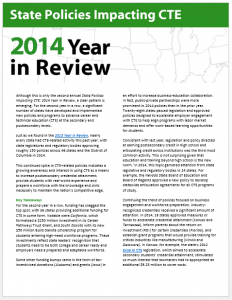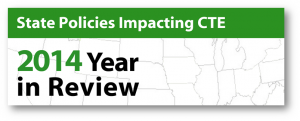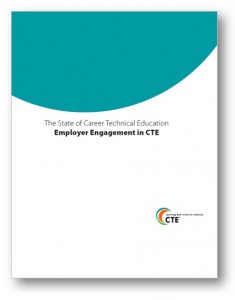 Last Tuesday, President Obama released his final budget request to Congress for Fiscal Year (FY) 2017. This document formally kicks off the federal budget and appropriations process for the coming year. As has been the case for much of the President’s time in office, this process is again shaping up to be rather contentious as both parties debate issues of spending and taxation in the context of the looming Presidential and Congressional elections this November.
Last Tuesday, President Obama released his final budget request to Congress for Fiscal Year (FY) 2017. This document formally kicks off the federal budget and appropriations process for the coming year. As has been the case for much of the President’s time in office, this process is again shaping up to be rather contentious as both parties debate issues of spending and taxation in the context of the looming Presidential and Congressional elections this November.
Overall, the President’s budget outlines an extremely ambitious set of spending priorities for the coming year, totaling $4.1 trillion overall. The budget proposes significant new investments in a number of new and existing education and workforce development programs, but disappointingly does not propose any additional funding for states via the Carl D. Perkins Act’s (Perkins) basic state formula grant program.
Instead the President has renewed his proposal for the creation of an “American Technical Training Fund†(ATFF) that, if created, would constitute a new competitive grant program outside the scope of this foundational support for CTE. ATTF can best be understood as a successor program to the Admisntration’s 2013 Youth Career Connect Initiative, but so far Congress has not acted to formalize this proposal which was also included in the President’s budget last year for $100 million at that time.
As Kimberly Green, Advance CTE Executive Director and others noted on the day of the release, the President’s request for level-funding for Perkins state grants is concerning at a time when demand for high-quality Career Technical Education (CTE) programs is rising— a fact even the Administration has recently highlighted. While the Obama Administration does request an additional $2 million for CTE national activities under Perkins, this increase would also be used for the purposes of evaluating the effectiveness of the proposed ATTF.
Despite these concerning elements, the President’s budget does put forth a set of somewhat more encouraging spending proposals as part of a wider skills development agenda that could compliment much of the work already underway in the CTE field:
- $500 million in mandatory funding for the creation of a “Workforce Data Science and Innovation Fund†along with a doubling of funding for state longitudinal data systems. Read more on these data investments at the Workforce Data Quality Campaign’s blog.
- $2 billion to expand apprenticeship programs, and $200 million specifically for youth apprenticeship and pre-apprenticeship programs.
- Increases for the Workforce Innovation and Opportunity Act’s youth, adult, and dislocated formula grant programs that are each consistent with the funding levels proposed in the law.
- $60.8 billion in mandatory funding for the President’s proposed “America’s College Promise†program that would provide two years of postsecondary education tuition-free for eligible students in qualifying programs.
- $500 million for business tax credits (up to $5,000 each) for employers to partner with community colleges in high-demand industry areas and incentivize the hiring of graduates. The grants would be available from 2017-2021 and more information can be found here and here.
The President’s budget can be viewed in its entirety here. The U.S. Department of Labor and Education’s (USDOL / USDE) budgets can be accessed here and here respectively. Of particular note is USDE’s budget justification for CTE and Adult Education which can be accessed here. This document provides further insight into the administration’s thinking behind their Perkins proposals contained in the budget and outlined above.
It is important to note that this budget request is simply that— it does not constitute formal policy and Congress must still pass a budget and respective spending bills to enact any of these proposals. Given Congressional Republican’s continued concerns on federal spending, deficits, and the national debt, there is little chance that most of what is being proposed by the President will become law. In fact, the Congressional budget committees have gone so far as to “snub†the administration and have not asked the Director of the Office of Management and Budget to testify on this proposal—a key indicator on how far this proposal is likely to get in Congress this year.
As the Congressional budget and appropriations process continues to take shape, be sure to check back here for more updates and analysis.
Senate Passes CTE Month Resolution and Hosts Employers to Talk About the Value of CTE
As many are aware, every year February is informally known as “CTE Monthâ€â€”a time to celebrate and lift up all of the great work underway in the CTE community. Last week, the Senate voted unanimously in support of a resolution—sponsored by Senate CTE Caucus co-chairs Sens. Kaine (D-VA), Portman (R-OH), Baldwin (D-WI), and Isakson (R-GA)— that formally recognizes and honors February as CTE month. The resolution can be viewed in its entirety here.
The resolution was co-sponsored by 17 other Senators from both parties and the Senate’s unanimous recognition and support of this resolution underscores the chamber’s continued commitment to the CTE enterprise. Advance CTE applauds this move by the Senate and looks forward to celebrating the rest of CTE month in the coming days and weeks.
In addition to this effort, the Senate CTE Caucus also played host to a briefing on employer engagement with CTE programs last week. The briefing, co-hosted by the Industry Workforce Needs Coalition and Opportunity America, gave employers—ranging in size and location from a small manufacturing firm in Wisconsin to a large engineering firm in Texas— a chance to speak about the importance of CTE to their respective enterprises and industries. Each of the panelists emphasized the importance of employers having a “seat at the table†during program development and implementation and underscored that there are many ways for employers of all shapes and sizes to engage with states’ CTE systems and with local CTE programs.
Three of the four Senate CTE Caucus co-chairs provided remarks during this event, each speaking about their unique interests in CTE and how they view CTE meeting the needs of students and employers alike in the coming years. The full video of the event can be accessed here—we encourage you take a look!
Odds and Ends
- USDOL has announced another delay for the forthcoming final regulations for the Workforce Innovation and Opportunity Act (WIOA). Significantly, state WIOA plans will now be due April 1 of this year. The final WIOA rules will now be published sometime in “June 2016â€. Moreover, USDOL has also clarified that requirements related to the sharing of One-Stop infrastructure costs will not go into effect until the next program year rather than the one set to begin this summer. More recently, Congress has begun to express disappointment with this announcement.
- USDE has continued to provide the field with more information about the ongoing implementation of the Every Student Succeeds Act (ESSA). The Department has created a website to house all of these updates and plans to regularly update it the coming years. Early this month USDE formally began the negotiated rulemaking process which is set to begin later this spring.
Steve Voytek, Government Relations Manager
 For students in high-skill career pathways, winning an invitation to the SkillsUSA national competition is one of the biggest honors in their field. Not only does the annual competition give students an opportunity to showcase their talent in different trades but it also demonstrates what the future of Career Technical Education (CTE) can be: a coordinated, cross-sector effort to put learner success first.
For students in high-skill career pathways, winning an invitation to the SkillsUSA national competition is one of the biggest honors in their field. Not only does the annual competition give students an opportunity to showcase their talent in different trades but it also demonstrates what the future of Career Technical Education (CTE) can be: a coordinated, cross-sector effort to put learner success first. 





